- Home
- TV History
- Network Studios History
- Cameras
- Archives
- Viewseum
- About / Comments
Skip to content
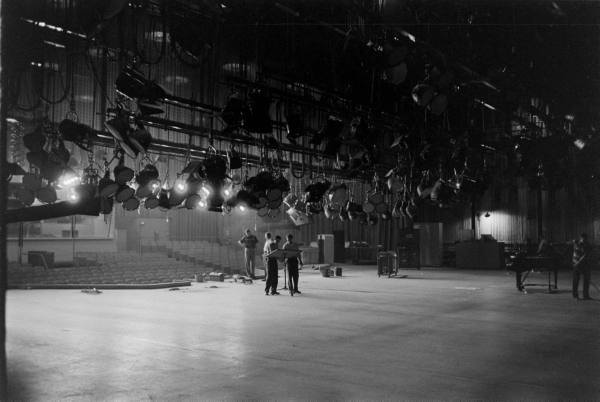



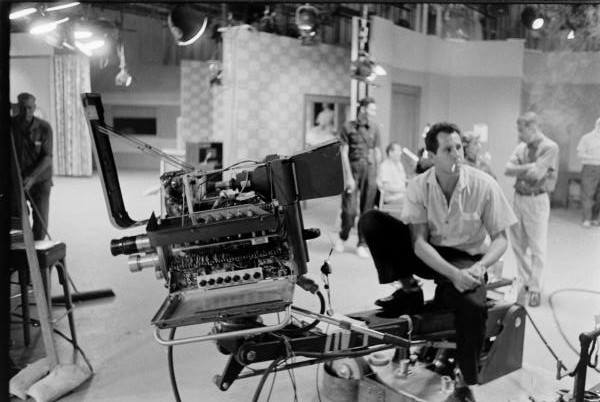











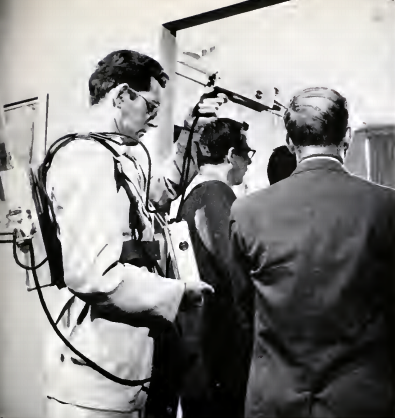

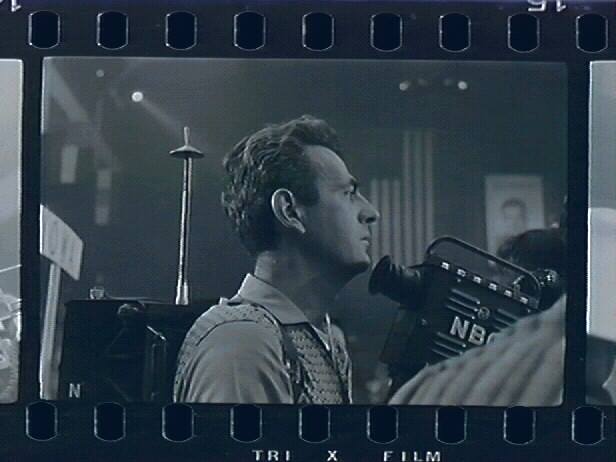



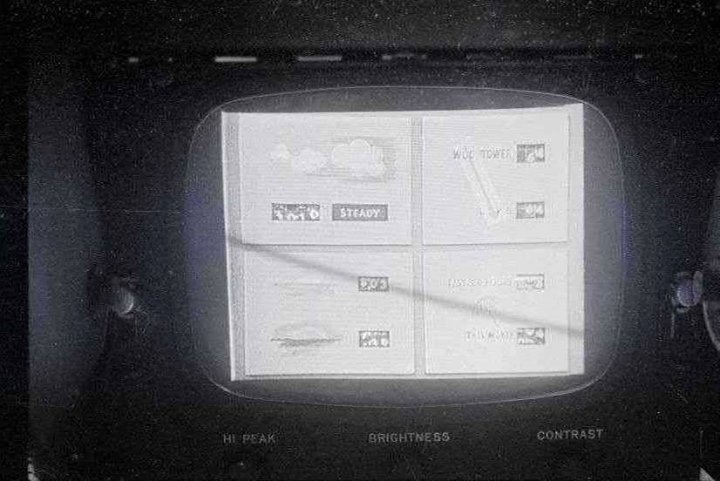











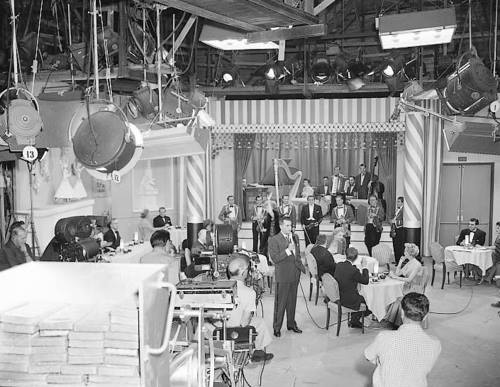

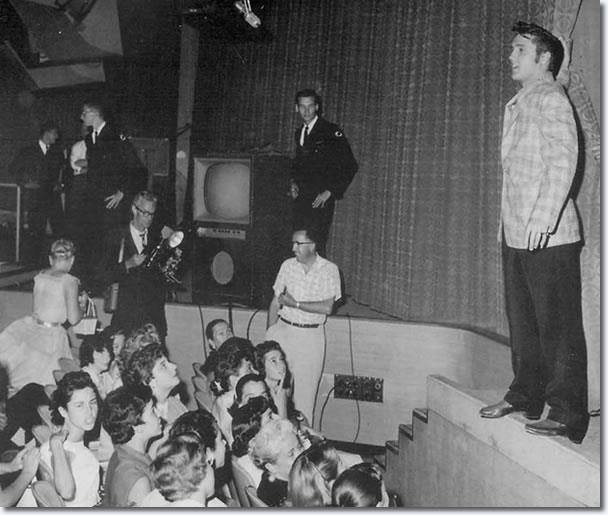

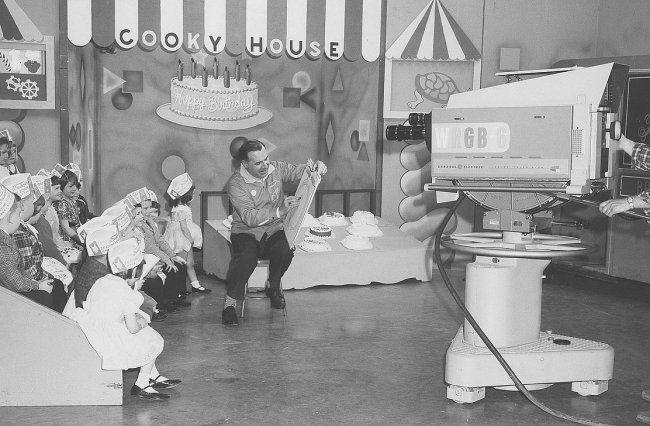

Posts in Category: TV History
Page 98 of 136
« Previous
1
2
3
4
5
6
7
8
9
10
11
12
13
14
15
16
17
18
19
20
21
22
23
24
25
26
27
28
29
30
31
32
33
34
35
36
37
38
39
40
41
42
43
44
45
46
47
48
49
50
51
52
53
54
55
56
57
58
59
60
61
62
63
64
65
66
67
68
69
70
71
72
73
74
75
76
77
78
79
80
81
82
83
84
85
86
87
88
89
90
91
92
93
94
95
96
97
98
99
100
101
102
103
104
105
106
107
108
109
110
111
112
113
114
115
116
117
118
119
120
121
122
123
124
125
126
127
128
129
130
131
132
133
134
135
136
Next » Naked To The World…Studio 33, CBS Television City
On January 12, 2014
- TV History
Naked To The World…Studio 33, CBS Television City
After all these years of seeing Red Skelton, Jack Benny, Carol Burnett, The Smothers Brothers, ‘The Match Game’, The Price Is Right’ and probably a thousand more shows on this stage, it’s nice to see it in it’s natural state. It always looks so intimate on television but this shot gives a different perspective on it’s size. The studio is 66′ x 110′ and seats 300.
The Story Behind The CBS & RCA/NBC Color Feud
On January 12, 2014
- TV History
The Story Behind The CBS & RCA/NBC Color Feud
These screen shots are from a color special that aired June 21, 1951 when CBS embarked on a four and an half month test of their Field Sequential System. The last commercial CBS Color System broadcast was the North Carolina-Maryland football game on October 20, 1951 and was in fact, the first college football game done in color. On June 25, 1951 regularly scheduled commercial colorcasts began on CBS on a five-station East Coast network. More than 10.5 million monochrome sets in the U-S, were blind to these telecasts. The CBS colorcasts were stillborn…. The RCA delaying tactic you’ll read about below had been successfully fatal to the CBS Color System. CBS had first broadcast its Field Sequential Color System as early as August 28, 1940. Their 1949 Color System was the third field sequential approach to be proposed to the FCC for adoption. They had suggested that their field sequential standards be adopted in 1941 and 1946. At those earlier times, with few black and white receivers in the hands of the public, the adoption of the CBS system might have been feasible. Remember, their system used spinning red, blue and green discs behind the camera lens and in front of the home receiver’s picture tube.
At the conclusion of the color hearings in 1950, there was much pressure by the color television proponents for the FCC to immediately adopt a color standard. On September 1, 1950, the FCC issued its First Report on Color Television Issues (Public Notice 50-1064) in which it deferred the adoption of a standard. The FCC in its October 11, 1950 Second Report on Color Television Issues (Public Notice 50-1224), formally adopted the CBS system as the USA standard for color television. RCA, on October 17. 1950, brought suit against the FCC in the Federal District Court in Chicago to halt the start of CBS colorcasts. After the court upheld the FCC order, RCA appealed to the Supreme Court which, on May 28, 1951, affirmed the lower court ruling in favor of CBS. RCA effectively delayed the initiation of the CBS system, allowing the continued sale of even more black and white sets which could not receive the CBS signals.
The FCC reasoned that if manufacturers would build black and white receivers that could handle both monochrome and CBS scanning standards, time could be allowed for the development of an acceptable compatible system. If the set makers could not provide this “bracket standard” reception capability, then the FCC would be forced to adopt the CBS system immediately to avert the continually growing compatibility problem. The FCC reasoned that, with the 5-6 million annual receiver sales rate, within one year 40 percent of the receivers in use could receive the CBS broadcasts.
Of course, the manufacturing industry refused, when faced with adding an additional increment to their receiver sales cost within what they thought was an impossible timetable. With most of the manufacturing industry against adoption of the field sequential system, CBS was forced to purchase Hytron Radio and Electronics Corporation with its Air-King receiver manufacturing subsidiary. The acquisition was done, according to Frank Stanton, President of CBS, “to assure at least some source for color receivers to the public”. On September 20, 1951, production began of the first (and only) commercial color television set – the CBS-Columbia Model 12CC2. Sales of the set began by Gimbels and Davega in New York for $499.95, According to Allen B. DuMont, 200 of these sets were shipped and I00 were sold
Viewer and advertising industry interest with the CBS system was disappointing. No sponsors were found as the color broadcast schedule increased from 4 1/2 hours for the week of June 21, 7 1/2 hours for the week of September 24, and 12 hours for the week of October 15. Actually, CBS did not fully commit to their system as colorcast were only scheduled in the evening before prime time telecasts. In less than a month after sales of this first receiver first began, Charles E. Wilson of the Defense, Production Administration asked CBS to suspend production of color receivers, “to conserve materials for defense.” (Korean War) This, according to Allan B. DuMont was, “a move to take Columbia off the hook.” CBS announced that it would stop colorcasts and recalled and destroyed the sold color sets. Of political interest was that monochrome television receiver production was not affected.
Two years later, during a Congressional hearing on March 25, 1953, CBS announced that it had no plans to resume its color system. The NPA lifted its ban on color receiver manufacturing the next day! It was now the obligation of the television industry to band together to devise an acceptable compatible color television standard. RCA’s Dot Sequential System won and this story is why there has been “bad blood” between CBS and RCA/NBC from that point on. Thanks to our friend Ed Reitan for the story. http://www.novia.net/~ereitan/index.html
Is It Hot In Here Or Is It Just Me?
On January 12, 2014
- TV History
Is It Hot In Here Or Is It Just Me?
Here’s an RCA TK11 with all it’s doors open to cool off. This shot is from CBS Television City from around 1956 and taken on Stage 43 where ‘Climax’ was done. It was an anthology show with different live dramas each week and was much like ‘Play House 90’ and ‘General Electric Theater’. Unlike local station cameras, network cameras were on 8 to 10 hours a day and the tubes put out more heat which could cause the viewfinder to go out.


‘I’ve Got A Secret’ November 1959…
On January 11, 2014
- TV History
‘I’ve Got A Secret’ November 1959…
At the 6 minute mark, Garry Moore call in cameraman Cass Gaylord to get close ups of the first Optical Character Reader which was invented by David Shepard. There are several shots of the RCA TK30 in the clip and the demonstration is interesting too.
http://www.youtube.com/watch?v=v2HM1DvQUdk
Inventor David Shepard appears on a 1959 episode of “I’ve Got a Secret” with the secret “I invented a machine that read and writes.” Mr. Shepard is considere…


Rare Color Shot: ‘The Honeymooners’, 1953
On January 10, 2014
- TV History
Rare Color Shot: ‘The Honeymooners’, 1953
Although the CBS shows starring Jackie Gleason, and friends, ended in 1970, Joyce Randolph never played “Trixie” after the 1957 season which ended in June and included more of their sketches than almost any other year. In October 1958, Gleason debuted a half-hour version of The Jackie Gleason Show, with Buddy Hackett as a sidekick, but it was short-lived, cancelled in January 1959.
In 1961, Gleason began an ill-fated stint as host of a game show called ‘You’re in the Picture’, which lasted only one episode, and was so bad that it led to Gleason offering an on-air apology to his viewers the following week. Committed to filling a quota of episodes, Gleason renamed the series The Jackie Gleason Show and turned it into a short-lived talk show, featuring one-on-one informal interviews with Art Carney, Jayne Mansfield, Bobby Darin, and other friends and celebrities. In 1962, Gleason returned to the tried-and-true variety format with his ‘American Scene Magazine’ with the official title of ‘The Jackie Gleason Show’. In ’64, he moved the show to Miami and did Honeymooners sketches only when Art Carney was available. From ’57 till ’62, there were only two Honeymooners sketches in which Audrey Meadows and Joyce Randolph were replaced as Alice and Trixie by Sue Ane Langdon and Patricia Wilson, respectively, for two sketches. In January 1966, Meadows returned as Alice for a musical special, ‘The Honeymooners: The Adoption’, a re-enactment of a 1955 sketch of the same name. When the show returned in 1966, the ‘Honeymooners’ sketches (then in color for the first time) returned as a series of elaborate musicals. The sketches, which comprised ten of the first season’s thirty-two shows, followed a story arc that had the Kramdens and Nortons traveling across Europe after Ralph won a contest. “The Color Honeymooners”, as it has since become known, featured Sheila MacRae and Jane Kean in the roles of Alice and Trixie, respectively.


Jackie Gleason’s First Television Appearance
On January 10, 2014
- TV History
Jackie Gleason’s First Television Appearance
Most of us that remember ‘The Life Of Riley’ think of William Bendix as the star, but actually, Jackie Gleason played “Riley” from October 4, 1949 to March 28, 1950. This video is the first episode of the show which ended first runs in March of ’50. Bendix had played “Riley” on the radio show and in the 1949 film but his RKO contract kept him from the role till 1953.
http://www.youtube.com/watch?v=ywYMJfyC6LU&list=PLB009D73A5B870D96
Life of Riley – Jackie Gleason – Tonsils – 1949 – Public Domain


Original Opening: ‘Honeymooners’ Classic 39 Episodes
On January 10, 2014
- TV History
Original Opening: ‘Honeymooners’ Classic 39 Episodes
Much like the original ‘I Love Lucy’ “stick figure” opening that included Phillip Morris sponsorship on the first run episodes, this was the first run opening for ‘The Honeymooners’ filmed episodes and includes a Buick sponsorship. After the first run, the “Classic 39” episodes got a new into with out the Buick mention. When Lucy went into reruns, the “satin heart” opening was created.
http://www.youtube.com/watch?v=cmgWeoGg4wc
The original opening for The Honeymooners, featuring the bus ride and Buick sponsor’s promo. First seen during the 1955-56 run of the “Classic 39”. Please no…
The RCA “Ultra” Portable Camera System
On January 9, 2014
- TV History
The RCA Ultra Portable Camera System
Much like our friend Don “Peaches” Langford, who was one of ABC’s pioneers in portable camera work, this is NBC’s Don Mulvaney. You’ll see Mr Mulvaney below in photos from 1956 on, with RCA’s first mobile cameras and with that experience, he became the first to operate the RCA “Ultra Cam” at the 1964 Democratic Convention in Atlantic City. This configuration became available in June of 1964 and weighs in at 22 pounds. The back pack is lighter as some of the components are now on the front mounted viewfinder as are some of the adjustments. This is still a black and white Vidicom camera and 12 years will pass before RCA introduces the TK76 color ENG camera. By the way…these cameras do take a toll on the body. With Peaches, it was his knees, with Mulvaney, it was his back.
1956, RCA/NBC Portable Camera Research & Development #1
On January 9, 2014
- TV History
1956, RCA/NBC Portable Camera Research & Development #1
This is the brand new RCA wireless Vidicon camera at the 1956 Republican Convention in San Francisco. This new unit is the first all transistor model and the only tubes used are the viewfinder CRT and RCA’s new Vidicon tube which is the size of a king size cigarette. The 4 pound camera has a detachable electronic viewfinder that can be docked with the camera or slung around the operators neck. The entire unit weighs only 19 pounds and the 15 pound back pack can push a good signal up to a mile. The 4 pound camera is 2 1/2 inches high, 3 inches wide and 8 inches long and has an 8mm lens. As you will see below, RCA/NBC had other portable cameras there, including a Philco model, and was doing a lot of field testing, research and comparisons. Political conventions are a great place to do R&D work as they are truly remote broadcasts, but are also controlled environments that last about a week for the broadcasters. The silver cell batteries used by this camera can hold their charge up to 5 hours as compared to 2 hours with the older versions of RCA’s “Walky Looky” cameras.
1956, RCA/NBC Portable Camera Research & Development #2
On January 9, 2014
- TV History
1956, RCA/NBC Portable Camera Research & Development #2
From the 1956 Republican Convention at the Cow Palace in San Francisco, here is an updated version of the 1952 RCA Vidicon portable wireless camera. Together, the back pack and camera weigh 48 pounds with 42 pounds of those on the cameraman’s back. Like it’s predecessor, this camera has a 3 inch CRT view finder and although you can’t see it, also has a 3 lens turret with 8, 16 and 35mm lenses. This version also features a handle on top for easy carrying. By the way, the cameraman here is NBC veteran Don Mulvaney. This unit and the transistorized version shown above were also both used at the 1960 conventions.
1956, RCA/NBC Portable Camera Research & Development #3
On January 9, 2014
- TV History
1956, RCA/NBC Portable Camera Research & Development #3
Now THIS is RARE! These photos are also from the 1956 Republican Convention in San Francisco and show an NBC cameraman using a Philco hand held Vidicon camera. Why would RCA/NBC use a competitor’s camera? Because the half inch Vidicon tube in it is made by RCA. A 3-inch diameter monitor using an RCA 3RP4 CRT tube was provided for the operator and this is also a newly developed tube. At the time, Dage also made a hand held Vidicon, but neither Philco or Dage had a wireless model like RCA’s as both of their cameras were cabled.
Through The Eye Of A TK42
On January 8, 2014
- TV History
Through The Eye Of A TK42
On the left is a shot of the RCA TK42 viewfinder framing a weather board at WOC. Between 1965 and 69, RCA sold 375 of these cameras and 93 TK43 models that had the external lens. Today, only 19 are known to have survived in the hands of collectors.
America’s First African American Television Star…Ethyl Waters
On January 8, 2014
- Archives, TV History
As early as 1919, Ethyl Waters had been appearing in roles on Broadway and in 1926 recorded “Dinah” which was the first international hit by a black singer. In 1933, she became the first person to ever sing and record “Stormy Weather” as the star of the Broadway show by the same name. By the late ’30s, she became the first African American to have equal billing with white stars. In 1939, while she was starring on Broadway in ‘Mamba’s Daughters’, NBC’s experimental station in NY produced a one hour version of the show and did it live from Studio 3H. A few months later, NBC
gave her a summer series called ‘The Ethyl Waters Show’. The bigger television break came in 1950 when ABC created ‘Beulah’ with Waters as the star. The show ran two seasons and ended when Waters left the show. Below is a very rare shot from NBC Studio 3H showing Waters on the ‘Mamba’s Daughters’ set and RCA 500A Iconoscope cameras. The lighting was so intense that one cameraman has on a pith helmet and the one in the middle has a cloth apron over his viewfinder and head to help him see the image. These silver 500A camera scanned 441 lines of resolution, which is double the 220 lines scanned by their dark colored predecessors.
America’s First Television Pioneer…Charles Jenkins
On January 7, 2014
- TV History
America’s First Television Pioneer…Charles Jenkins
Below is a photo of Charles Francis Jenkins directing “Shadowgraph” mechanical television November 6, 1929 at W3XK located in Washington DC and later, Wheaton Maryland. According to research from friend of mine, Dr. Horace Newcomb, (who until last year was head of the Peabody Awards committee at The University of Georgia), W3XK was the first experimental television license granted in the US by the Federal Radio Commission and transmission began July 2, 1928. But…on June 13, 1925, Jenkins had provided America’s first public demonstration of television. Now, all this was mechanical television and not electronic like Farnsworth was working on, but none the less…it was television. Charles Jenkins name is almost forgotten, but he was a major inventor and among his accomplishments was the co creation of the first practical motion picture projector in 1894, the founding of The Society Of Motion Picture Engineers (now SMPTE), the invention of the first commercial paper cup, electric starters for cars, altimeters and brake systems for aircraft and much more as he was the holder of over 400 patents. Jenkins was also involved in the first early wireless transmission of photos and teletype messages. Gone but not forgotten. By the way, did you notice the the camera operator is a woman? Another first?
‘People Will Talk’, A Fred Westbrook Photo
On January 7, 2014
- TV History
‘People Will Talk’, A Fred Westbrook Photo
Hosted by Dennis James and originating from NBC Burbank, this Heater-Quigley game show only lasted a year. The host posed moral-type questions like “Should a wife be a stay-at-home mother?” “Is it alright to kiss in public?” There were two contestants and a panel of 15 celebrities. The contestants take opposite sides, giving a brief explanation supporting their stance. Host James then polls each member of the celebrity panel, who gave their answer and a usually humorous explanation. Each vote was worth one point; the first contestant to score four points won $25 for the question. The contestant who scored $100 first won a prize. This game would later be retooled into “The Celebrity Game,” which aired in 1964 and 1965 on CBS. The cameras are RCA TK11s and this could be Studio 1.
‘The Honeymooners’ History
On January 7, 2014
- TV History
‘The Honeymooners’ History, Part 1
In July of 1950, Jackie Gleason took over as host of Dumont’s hour long ‘Cavalcade Of Stars’ comedy/variety show. After playing with an idea based on the radio show ‘The Bickersons’, Gleason and his writers created Ralph and Alice Cramden and the Honeymooners debuted October 5, 1951 in a six minute sketch. Art Carney, who was already on the Cavalcade show was in that first sketch too, but played a policeman that had been hit by a sack of flower Gleason had thrown out the window. Soon after that original sketch, Gleason added Carney as a regular Honeymooner, Ed Norton and hired an actress to play his wife. Norton’s first wife, portrayed as a burlesque dancer, was played by Elaine Stritch, but she was soon replaced with a more mundane housewife type played by Joyce Randolph.
In 1952, Gleason’s Dumont contact was up and CBS hired him, and although Gleason was in total control of ‘The Jackie Gleason Show’, CBS made him replace “Alice”, played by Pert Kelton who was then on a blacklist during the McCarthy era red scare. Audrey Meadows took over as Alice that completed the now famous line up. Similar in format to the Dumont show, Gleason had a live, one hour show with lots of characters and sketches, of which The Honeymooners was a part, but those sketches with the Cramdens grew in popularity and could last from six minutes to thirty five minutes.
By 1955, Gleason felt he needed a break from live television but The Honeymooners were more popular than ever, so, Jackie took the cast to The Adelphi Theater and using the Dumont Electronicams (video and film) produced 39 half hour episodes on film. The first episode aired October 1, 1955 at 8:30 Saturday night and was against ‘The Perry Como Show’ on NBC and ‘Ozark Jamboree’ on ABC. In February of ’56, the show moved to 8 PM, but Perry Como was a strong contender. The last of the “Classic 39” episodes aired September 22, 1956. Gleason felt that the characters had done about as much as they could and although original plans called for a three year run of the half hour show, Jackie felt it was better to stop after a year for artistic reasons. One week later, ‘The Jackie Gleason Show’ returned in it’s original one hour comedy/variety format and not long after, so did The Honeymooners. Stay tuned for Part II.
ESPN’s “Fly Cam” At BCS Championship Game
On January 7, 2014
- TV History
Exclusive: ESPN’s “Fly Cam” At BCS Championship Game
If any one wondered how the fantastic flying shots that took us from outside the Rose Bowl to inside in one move were done, here’s your answer. Thanks to our friend Chuck Pharis, who was doing video at the game, these are photos of the Fly Cam which is not to be confused with the more common Sky Cam which moves up and down, left to right and back to front. The Fly Cam has 2 towers. One was outside the stadium in a grassy area. The other tower was near the lighting towers on the roof, inside the stadium. The camera runs from inside the stadium to the front of the Rose Bowl. The operator is located at the base of the tower outside the stadium. There will be one Fly Cam at the Winter Olympics on Down Hill Ski events. Thanks for the story and photos Chuck!
A True Rarity…The Photo & The Scene
On January 6, 2014
- TV History
A True Rarity…The Photo & The Scene
It’s not often that we can match a production still with the actual scene, but here it is linked above. Thanks to Kent Ayres, we now know both are from ‘I Love Lucy’ Episode 121 called “Hollywood Anniversary”. This is Ricky’s club set dressed as The Macombo with a crane on the set getting some nice flowing shots as you’ll see in the video.
When Elvis Debuted On Sullivan…Neither One Were In Studio 50
On January 6, 2014
- TV History
When Elvis Debuted On Sullivan…Neither One Were In Studio 50
The Elvis photo below was taken September 9, 1956 at CBS Television City. This was his debut on ‘The Ed Sullivan Show’ but Ed was in the hospital recovering from a car crash which had occurred about a week before. Oscar winning actor Charles Laughton filled in as host that week as Sullivan watched from his bed. Elvis was shooting ‘Love Me Tender’ in LA and Laughton introduced him like he was there with them in New York.
‘Bread Time Stories’, WRGB Schenectady NY
On January 6, 2014
- TV History
‘Bread Time Stories’, WRGB Schenectady NY
Although WRGB was NBC Television’s first affiliate, they always used GE broadcast equipment. Why? Because the were owned by GE and if you remember, RCA was born out of GE. In the photo is a shot of a GE PC25 color camera…GE’s second color model which followed the PC15. It’s as big as an RCA TK41 color camera, but weighs “only” about 215 pounds instead of over 300 for the TK41. Above is a short WRGB news retrospective on the 50s era local kids show they did for many years and shows what look like GE PE11 black and white cameras in the studio. The station serves the Schenectady/Albany/Troy area.
Page 98 of 136
« Previous
1
2
3
4
5
6
7
8
9
10
11
12
13
14
15
16
17
18
19
20
21
22
23
24
25
26
27
28
29
30
31
32
33
34
35
36
37
38
39
40
41
42
43
44
45
46
47
48
49
50
51
52
53
54
55
56
57
58
59
60
61
62
63
64
65
66
67
68
69
70
71
72
73
74
75
76
77
78
79
80
81
82
83
84
85
86
87
88
89
90
91
92
93
94
95
96
97
98
99
100
101
102
103
104
105
106
107
108
109
110
111
112
113
114
115
116
117
118
119
120
121
122
123
124
125
126
127
128
129
130
131
132
133
134
135
136
Next »